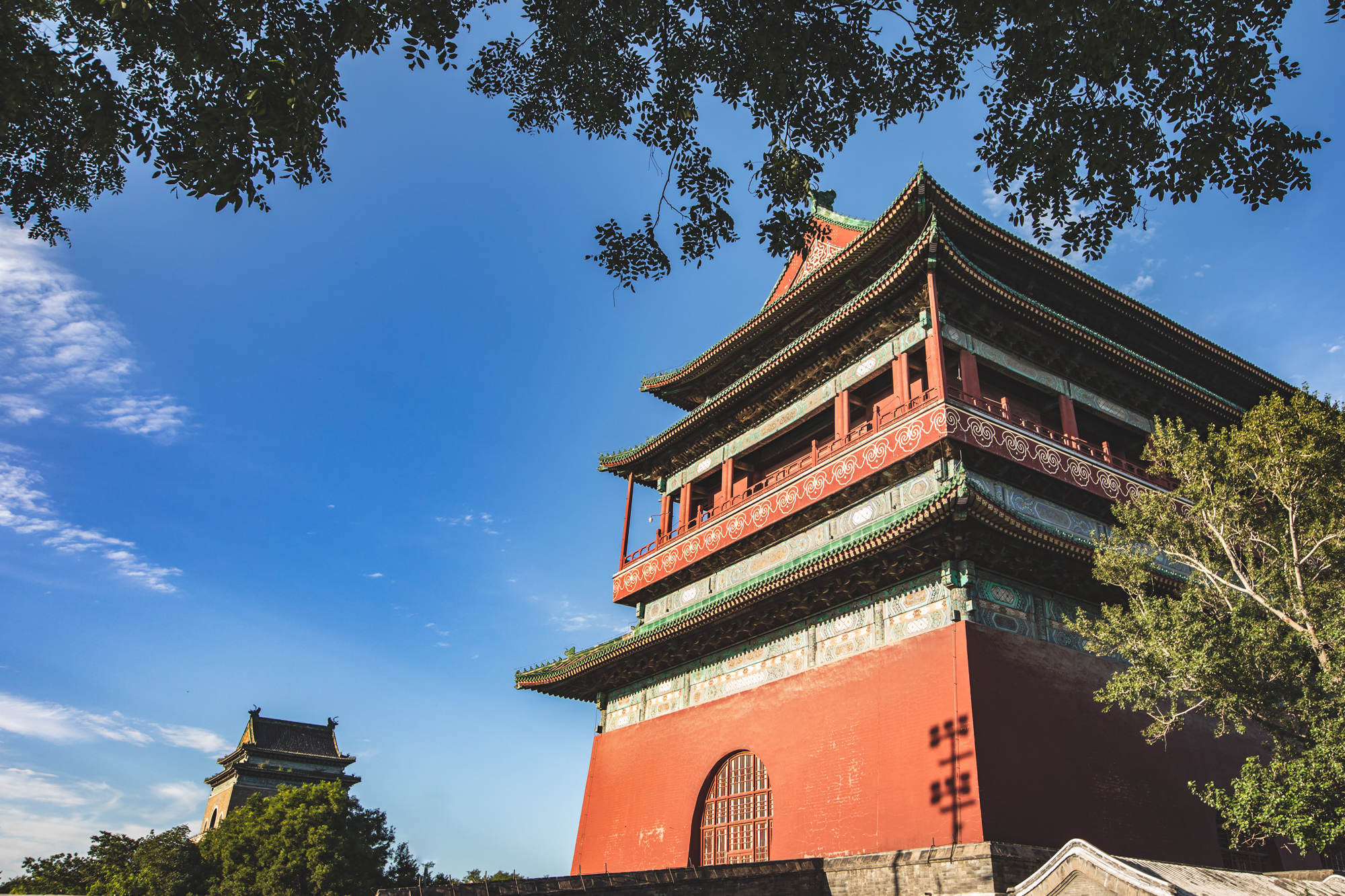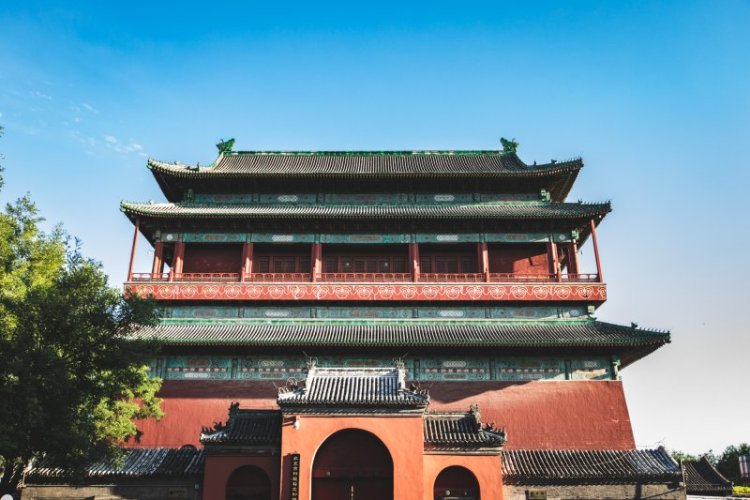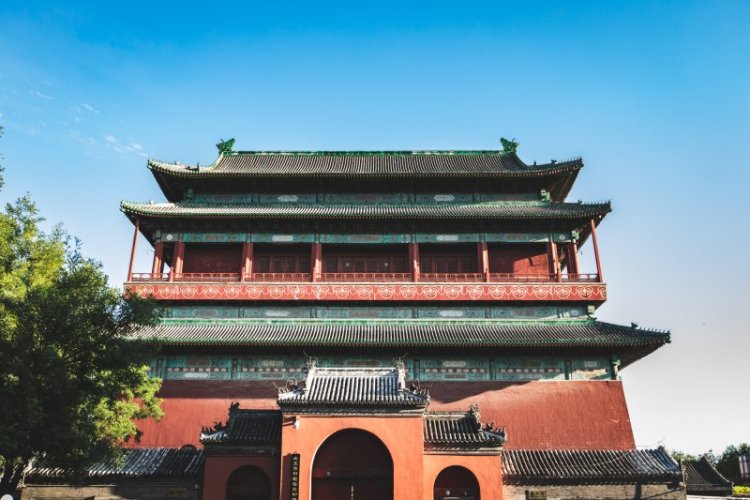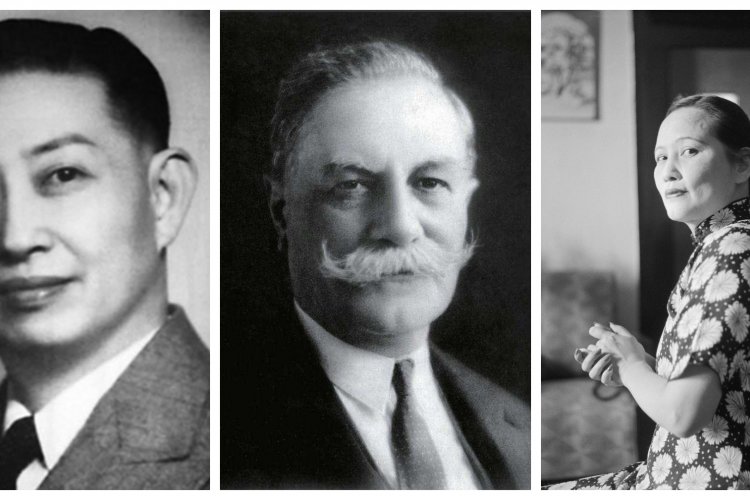The clock exhibition in the Palace Musem is facinating if you're into mechanical things. However, be aware there's more than a slight whiff of light machine oil, so much so that my wife refused to stay in the place and sat outside and waited patiently for me.
Bells, Drums, Cannons & Clocks: A Brief History of Timekeeping in Beijing
There was a time when the Drum (鼓楼 gǔlóu) and Bell Towers (钟楼 zhōnglóu) were the two tallest buildings in Beijing. While their height was most likely practical – gotta make sure the sound of the drums and bell travels as far as possible – it seems to highlight their importance as the city’s original time keepers.

Originally built during the Yuan Dynasty in 1272, the drums and the bells were used to signal time throughout the day all the way up to 1924, when Emperor Puyi was evicted from the Forbidden City.
So why both a bell and drum tower? One was for the morning, and the other for the evening. According to Lars Ulrich Thom, of Beijing Postcards, during the Qing Dynasty the drum and bell towers’ main function was to signal the opening and closing of the gates each day.

Lars adds that the drums would then be beaten every geng. One geng was equal to two hours, meaning the drums were beaten every two hours (or four gengs) each night.
Coming into the 1920s, the bell and drum tower were joined by another means of telling time throughout the day – a cannon. Known as the “noonday cannon”, it was mounted on the ramparts of the southern outermost city wall, and would be fired each day around noon to signal the day was halfway over.

But in spite of the bell, the drums, and the addition of the noon cannon, around the time of the last emperor’s departure from the capital, most folks had already made the switch to clocks.
While the location of Beijing’s first city clock isn’t all that clear, a replica of an alleged early clock tower can be found next to the Tianqiao Performing Arts Center today. For more modern massive timepieces, look no further than Beijing Railway Station, whose massive clock tower was completed along with the station in 1959.

Besides Beijing Railway Station, other spots with more contemporary clock towers include Wangfujing – with its massive Omega clock tower – and Solana. But what about smaller clocks from way back when? Well, there’s the Forbidden City for that.
The Palace Museum is home to a collection of over 120 intricately crafted clocks amassed by the royal family during the Qing Dynasty. It’s quite a sight to behold.

For yet smaller timepieces, Beijing also has its own homegrown wristwatch company. Simply called “Beijing Watch Factory”, the company popped up around 1950. While the brand doesn’t seem to carry the same prestige as the Shanghai Watch brand – which opened around the same time – it’s still going strong today, and their wristwatches, while on the expensive side, can be found on most online shopping platforms.
As for the bell and drum towers, these fixtures of ancient timekeeping are still open to the public – they were meant to reopen on Jun 13 – and the drum tower puts on regular drum demonstrations for the public throughout the day. As for the bell tower, its massive bell is only rung once a year around the New Year, so while you can look at it, you’ll have to strain your ears to hear the chimes of this behemoth at each year's end.
READ: Murder Mystery Tour: Go Back in Time With This Classic Audio Guide
Images: Uni You, Wikipedia







